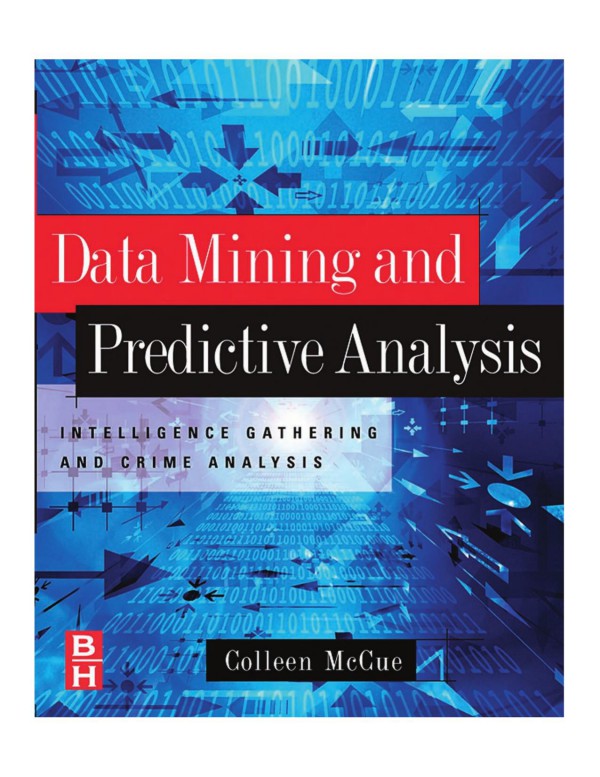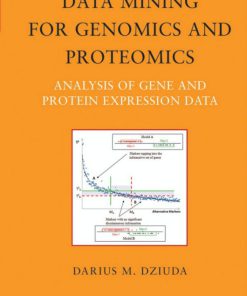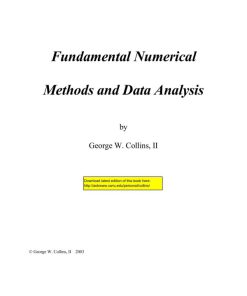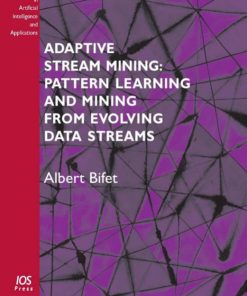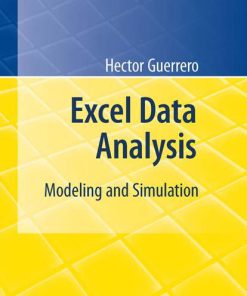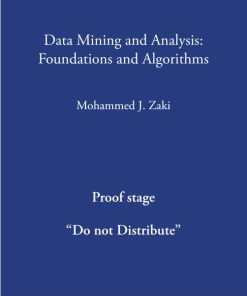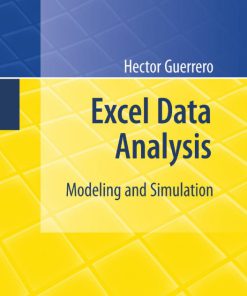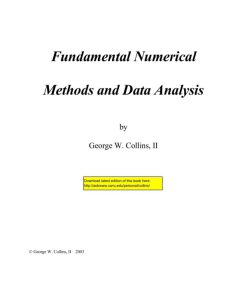Data Mining and Predictive Analysis Intelligence Gathering and Crime Analysis 1st Edition by Colleen McCue 0750677961 9780750677967
$50.00 Original price was: $50.00.$25.00Current price is: $25.00.
Authors:Ganesh Rao (Cepha Imaging INDIA) 4866 2001 Oct 23 13:15:14 , Tags:TeX output 2006.08.26:1741 , Author sort:13:15:14, Ganesh Rao 4866 2001 Oct 23 , Published:Published:Aug 2006 , Comments:Comments:TeX output 2006.08.26:1741
Data Mining and Predictive Analysis Intelligence Gathering and Crime Analysis 1st Edition by Colleen McCue – Ebook PDF Instant Download/Delivery. 0750677961, 9780750677967
Full download Data Mining and Predictive Analysis Intelligence Gathering and Crime Analysis 1st Edition after payment
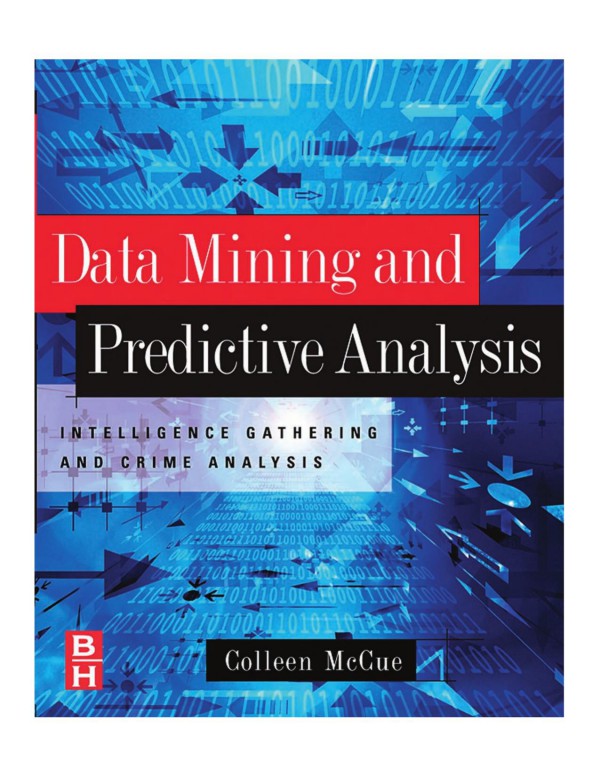
Product details:
ISBN 10: 0750677961
ISBN 13: 9780750677967
Author: Colleen McCue
Knowledge of advanced statistics is not a prerequisite for using Data Mining and Predictive Analysis. The book is a starting point for those thinking about using data mining in a law enforcement setting. It provides terminology, concepts, practical application of these concepts, and examples to highlight specific techniques and approaches in crime and intelligence analysis, which law enforcement and intelligence professionals can tailor to their own unique situation and responsibilities.
* Serves as a valuable reference tool for both the student and the law enforcement professional
* Contains practical information used in real-life law enforcement situations
* Approach is very user-friendly, conveying sophisticated analyses in practical terms
Data Mining and Predictive Analysis Intelligence Gathering and Crime Analysis 1st Table of contents:
1 Basics
1.1 Basic Statistics
1.2 Inferential versus Descriptive Statistics and Data Mining
1.3 Population versus Samples
1.4 Modeling
1.5 Errors
1.6 Overfitting the Model
1.7 Generalizability versus Accuracy
1.8 Input/Output
1.9 Bibliography
2 Domain Expertise
2.1 Domain Expertise
2.2 Domain Expertise for Analysts
2.3 Compromise
2.4 Analyze Your Own Data
2.5 Bibliography
3 Data Mining
3.1 Discovery and Prediction
3.2 Confirmation and Discovery
3.3 Surprise
3.4 Characterization
3.5 “Volume Challenge”
3.6 Exploratory Graphics and Data Exploration
3.7 Link Analysis
3.8 Nonobvious Relationship Analysis (NORA)
3.9 Text Mining
3.10 Future Trends
3.11 Bibliography
Methods
4 Process Models for Data Mining and Analysis
4.1 CIA Intelligence Process
4.2 CRISP-DM
4.3 Actionable Mining and Predictive Analysis for Public Safety and Security
4.4 Bibliography
5 Data
5.1 Getting Started
5.2 Types of Data
5.3 Data
5.4 Types of Data Resources
5.5 Data Challenges
5.6 How Do We Overcome These Potential Barriers?
5.7 Duplication
5.8 Merging Data Resources
5.9 Public Health Data
5.10 Weather and Crime Data
5.11 Bibliography
6 Operationally Relevant Preprocessing
6.1 Operationally Relevant Recoding
6.2 Trinity Sight
6.3 Duplication
6.4 Data Imputation
6.5 Telephone Data
6.6 Conference Call Example
6.7 Internet Data
6.8 Operationally Relevant Variable Selection
6.9 Bibliography
7 Predictive Analytics
7.1 How to Select a Modeling Algorithm, Part I
7.2 Generalizability versus Accuracy
7.3 Link Analysis
7.4 Supervised versus Unsupervised Learning Techniques
7.5 Discriminant Analysis
7.6 Unsupervised Learning Algorithms
7.7 Neural Networks
7.8 Kohonan Network Models
7.9 How to Select a Modeling Algorithm, Part II
7.10 Combining Algorithms
7.11 Anomaly Detection
7.12 Internal Norms
7.13 Defining “Normal”
7.14 Deviations from Normal Patterns
7.15 Deviations from Normal Behavior
7.16 Warning! Screening versus Diagnostic
7.17 A Perfect World Scenario
7.18 Tools of the Trade
7.19 General Considerations and Some Expert Options
7.20 Variable Entry
7.21 Prior Probabilities
7.22 Costs
7.23 Bibliography
8 Public Safety–Speci.c Evaluation
8.1 Outcome Measures
8.2 Think Big
8.3 Training and Test Samples
8.4 Evaluating the Model
8.5 Updating or Refreshing the Model
8.6 Caveat Emptor
8.7 Bibliography
9 Operationally Actionable Output
9.1 Actionable Output
Applications
10 Normal Crime
10.1 Knowing Normal
10.2 “Normal” Criminal Behavior
10.3 Get to Know “Normal” Crime Trends and Patterns
10.4 Staged Crime
10.5 Bibliography
11 Behavioral Analysis of Violent Crime
11.1 Case-Based Reasoning
11.2 Homicide
11.3 Strategic Characterization
11.4 Automated Motive Determination
11.5 Drug-Related Violence
11.6 Aggravated Assault
11.7 Sexual Assault
11.8 Victimology
11.9 Moving from Investigation to Prevention
11.10 Bibliography
12 Risk and Threat Assessment
12.1 Risk-Based Deployment
12.2 Experts versus Expert Systems
12.3 “Normal” Crime
12.4 Surveillance Detection
12.5 Strategic Characterization
12.6 Vulnerable Locations
12.7 Schools
12.8 Data
12.9 Accuracy versus Generalizability
12.10 “Cost” Analysis
12.11 Evaluation
12.12 Output
12.13 Novel Approaches to Risk and Threat Assessment
12.14 Bibliography
Case Examples
13 Deployment
13.1 Patrol Services
13.2 Structuring Patrol Deployment
13.3 Data
13.4 How To
13.5 Tactical Deployment
13.6 Risk-Based Deployment Overview
13.7 Operationally Actionable Output
13.8 Risk-Based Deployment Case Studies
13.9 Bibliography
14 Surveillance Detection
14.1 Surveillance Detection and Other Suspicious Situations
14.2 Natural Surveillance
14.3 Location, Location, Location
14.4 More Complex Surveillance Detection
14.5 Internet Surveillance Detection
14.6 How To
14.7 Summary
14.8 Bibliography
Advanced Concepts and Future Trends
15 Advanced Topics
15.1 Intrusion Detection
15.2 Identify Theft
15.3 Syndromic Surveillance
15.4 Data Collection, Fusion and Preprocessing
15.5 Text Mining
15.6 Fraud Detection
15.7 Consensus Opinions
15.8 Expert Options
15.9 Bibliography
16 Future Trends
16.1 Text Mining
16.2 Fusion Centers
16.3 “Functional” Interoperability
16.4 “Virtual” Warehouses
16.5 Domain-Specific Tools
16.6 Closing Thoughts
16.7 Bibliography
People also search for Data Mining and Predictive Analysis Intelligence Gathering and Crime Analysis 1st:
what is predictive data analytics
data-mining processes and techniques
data analyst vs intelligence analyst
data mining 4th edition pdf download

